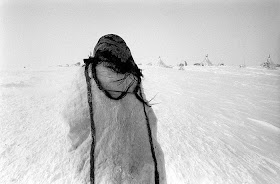A short post about things you should NOT look at when buying a camera, and things you should.
1/ First things you should not care about, or even avoid, weither they are features pushed by marketing or quality criteria looked at by un-savvy reviewers:
Zoom: the more it can zoom, the lesser the quality
- X7, X16, even X23 optical zoom ! That's one of the main things manufacturers and reviewer push forward. And the best lens on a compact is...the 35mm of the Fuji X100. A prime 35mm lens, that zoom nothing at all, since the only focal length you have in the same as the human eye. So why do prime lenses or lenses that zoom on a limited range outperforming large range zoom? It's mechanical and simple : on a prime lens, the elements inside the lens are not moving, perfectly aligned and optimized for this length. The moment you expand to zoom range, parts inside the lens move, and you need to make compromises so it work ok at different focal length. The larger the zoom range, the more compromises, the less optimal the quality, and in particular, sharpness.
- Because it's harder to get a good zoom, it's more expensive. If it's zooming tons and cheap, run away, it's crap.
Megapixels
- Megapixels don't determine sharpness, they are a resolution figure, a simple pixel count. The only thing they change is how big the file is, how big you can print. Now I bet less than 1% of ever printed A3 or more, in which case you are fine with 10MP. On your computer screen, 8 or 16MP won't many any difference, the 16MP will just be....slower to open.
Sharpness and resolution are different: sharpness is the perceived edge between 2 different objects, that is lens related, and for optimized sharpness, read the previous paragraphe again on zoom lenses.
- The more pixel, the less light sensitive. More pixels doesn't mean the sensor gets bigger, it means there are more smaller pixels on the same sensor. As they get smaller, they have less room to catch light. Period. That's why the 6000$ D3X is only a 12MP: it allows it to shoot wildlife in very low light.
Live view (seeing the image on the screen before you shoot) VS view finder
- All recent DSLR offer live view, so you don't need to aim with your eye against the camera. First of all it's plain stupid when it comes to framing. Second of all,
auto focus in live view are much much slower!
A great example of marketing made product : HX9V by Sony: X16 zoom, 16MP, on a sensor the size of a nail.
See the results (open full files!), here zoom at only ISO 400: sharpness is awful, but mostly no depth at all, and that rubbish melting pixel feel.
2/ Things you should look for
The lens
- if you are buying a SLR, put all the money in the lens. Period. All SLR can do pretty much the same, some are better, yes, but image quality is about the lens, and the sensor size. In line with what we said for the zoom, prefer a little zoom or prime lens, and privilege a actual camera manufacturers. No wonder why Fuji as a great lens on the
X100
. They do some really premium stuff for pros. I would expect good stuff also from Pentax, Nikon, Canon...well you know.
Maximum aperture (the "F" numbers) of the lens
- You already know small zoom range or prime lenses are to be preferred. You should also look for lenses with large aperture, that is to say small "F" numbers, F2.8 and below. On zoom lenses, you can hardly reach F2.8, but try to get a lens with a fixed F number, instead of the F4.5-5.6 kind of lenses.
Sensor Size
- the equally most importing thing with the lens: one rule,
the bigger the better. I would buy anything that is less than 25x17mm (Fuji X100, most SLR, some rare compacts)
Screen that moves at the back (for movies only)
- You would expect me saying it's worthless, but actually
if you shoot videos it's rather essential. Imagine shooting from strange angles otherwise. No can do.
Now a Fuji X100 picture: see the depth, the blur, the sharpness, this is at ISO 400 too for comparison. Yes it cost 3 times the price, but photography is like having a passion for sports cars, it's not cheap.










































